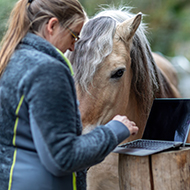Study finds cause of sleeping sickness spread
African trypanosomes are normally transmitted by tsetse flies.
A study from the University of Edinburgh has found that gene mutation has caused a deadly disease, known as sleeping sickness, to spread beyond Africa.
New strains of the disease have already been identified in Asia, South America and southern Europe. It is feared that a strain directly affecting humans could spread in a similar way.
Sleeping sickness, or tsetse-transmitted trypanosomiasis, can affect all domesticated animals. It can result in anaemia, cause loss of condition and impact reproduction. If left untreated, it can be fatal.
African trypanosomes, the parasites which cause sleeping sickness, are normally transmitted in sub-Saharan Africa by tsetse flies.
However, the researchers now suspect that climate change and the measures used to manage the tsetse fly population may have resulted in molecular changes in the organisms which cause sleeping sickness.
These changes have caused new and more virulent versions of the parasites. This includes the ability to cause infection without transmitting through tsetse flies.
To better understand these changes, the researchers analysed the genetic make-up of over 80 samples of trypanosomes. These samples were collected from people, tsetse flies, cows and other animals.
Using this information, the researchers collated the different parasite strains into a family tree.
They then tested the different molecular changes using a gene-editing tool called CRISPR-Cas9. This showed the multiple mutations which are involved in the life cycle and were involved in the parasite’s evolution.
The findings revealed that it was changes to the key genes which had simplified the organism’s life cycle and was enabling it to spread beyond the normal geographic range.
The researchers say that these new discoveries will prove vital to identifying and combatting emerging virulent strains of the parasites.
Study co-lead Keith Matthews, of the University of Edinburgh’s School of Biological Sciences, said: “Trypanosomes have found ways to expand their geographic range by excluding the tsetse fly from their life cycle.
“The molecular changes they exhibit can allow us to detect the emergence of these virulent parasites that threaten both cattle and, potentially, humans.”
Guy Oldrieve, also a co-author from the University of Edinburgh, added: “We plan to continue this research and develop a portable diagnostic tool to facilitate detection of future outbreaks in real-time.”
The full study can be found in the journal Nature Communications.
Image © Shutterstock



 With Strangles Awareness Week just around the corner (5-11 May), vets are being encouraged to share a survey about the disease with their horse-owning clients.
With Strangles Awareness Week just around the corner (5-11 May), vets are being encouraged to share a survey about the disease with their horse-owning clients.